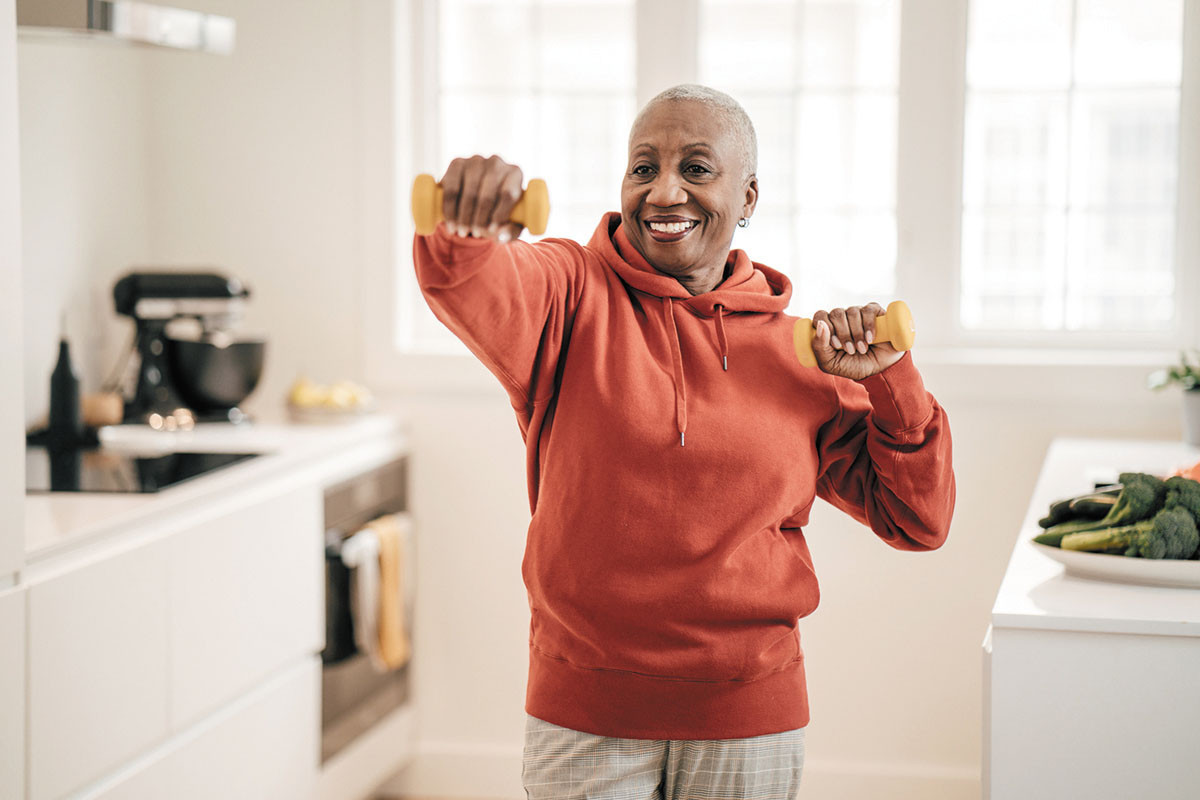
Tips to leverage neuroplasticity to maintain cognitive fitness as you age

Can white noise really help you sleep better?

Celiac disease: Exploring four myths

What is prostatitis and how is it treated?

What is Cushing syndrome?

Exercises to relieve joint pain

Think your child has ADHD? What your pediatrician can do

Foam roller: Could you benefit from this massage tool?

Stepping up activity if winter slowed you down

Common causes of cloudy urine
Exercise & Fitness Archive
Articles
What's the minimum amount of exercise I need each week?
A 2022 study involving 72,000 people suggested that those who did even 15 minutes of vigorous activity per week had a 17% lower risk of death from any cause and death from cancer, compared with people who were inactive. With about 50 minutes per week, death from any cause was reduced by 36%. The reduction in risk of death from all causes, and death from cancer, was greatest in the first 40 minutes of vigorous physical activity per week.
Move of the month: Arm curls
Arm curls, which strengthen your biceps, can be done with dumbbells or household items such as cans of soup or water bottles.
Winter hiking: Magical or miserable?
The instinct to stay indoors during winter can start to feel confining after a while. Going for a winter hike is a great way to get out in nature and get exercise, but it's quite different from warm-weather hiking, and requires preparation and precautions.
Adding strength training to aerobic exercise may fuel longevity
A 2022 study found that people who did at least two sessions of strength training as well as 2.5 hours of moderate-to-vigorous aerobic activity each week were 30% less likely to die during an eight-year study period, compared with people who did less strength training.
Reclaim your pre-pandemic function
Many people have become deconditioned and lost some physical function as a result of inactivity during the pandemic. This may be causing them to change their habits, patterns, and activities because they don't think they can do them or don't feel like doing them anymore. People who've lost physical function as a result of inactivity can take several steps to get function back. Examples include setting goals, tracking activity, getting help from a physical therapist, adding weight training to an exercise regimen, exercising with a friend, and not giving up.
The many ways exercise helps your heart
Aerobic and muscle-building exercises can trigger physiological changes that improve blood vessels and metabolism in ways that help prevent all the major risk factors that contribute to heart disease. These include high blood pressure, diabetes, obesity, and unhealthy cholesterol levels. Exercise can also improve mental health problems such as depression and stress, which are common but underrecognized risks for heart disease.
Rethinking cardio exercise
Standard guidelines recommend at least 150 minutes per week of moderate-intensity aerobic exercise. But many older adults have trouble reaching this mark, as they either don't enjoy aerobic workouts or have physical or medical issues that make traditional cardio exercise a challenge. Breaking down the weekly requirements into smaller daily segments and trying a variety of activities that can qualify as moderate intensity can help people meet their exercise needs.
The best exercises for your warm-up
Warm-ups prepare the body for the physical demands of a workout or sports. They should be tailored to the types of activities that are about to be performed. For a strengthening routine or moderate-intensity activity (such as brisk walking), marching in place for a few minutes makes an effective warm-up. For vigorous physical activity, such as swimming or playing tennis, or for activity involving strenuous physical movements, such as golf, a more extensive warm-up is necessary. For example, a golf warm-up should include marching in place and movements that gently swing the arms and trunk.
Meeting your exercise goals online
The COVID-19 pandemic shut down many gyms, spawning new online fitness class options that included Spin, Pilates, dance, and yoga. Maintaining an exercise routine during the pandemic offered multiple physical and mental health benefits by boosting mood-related brain chemicals and enhancing sleep. People exercising virtually could stay fit and maintain contact with others without risk of COVID infection. Even beyond pandemic-related concerns, virtual workouts can offer convenience, variety, privacy, and a sense of shared experience.
Get a lift from body-weight workouts
Body-weight exercises are ideal substitutes for regular workouts when people are short on time or looking to shake up their usual routine. These types of exercises are not only versatile—as they can be done anytime, anywhere, without any equipment— but they also help improve everyday movements by activating the smaller stabilizing muscles that sometimes get missed when a person uses gym machines or dumbbells.

Tips to leverage neuroplasticity to maintain cognitive fitness as you age

Can white noise really help you sleep better?

Celiac disease: Exploring four myths

What is prostatitis and how is it treated?

What is Cushing syndrome?

Exercises to relieve joint pain

Think your child has ADHD? What your pediatrician can do

Foam roller: Could you benefit from this massage tool?

Stepping up activity if winter slowed you down

Common causes of cloudy urine
Free Healthbeat Signup
Get the latest in health news delivered to your inbox!
Sign Up











